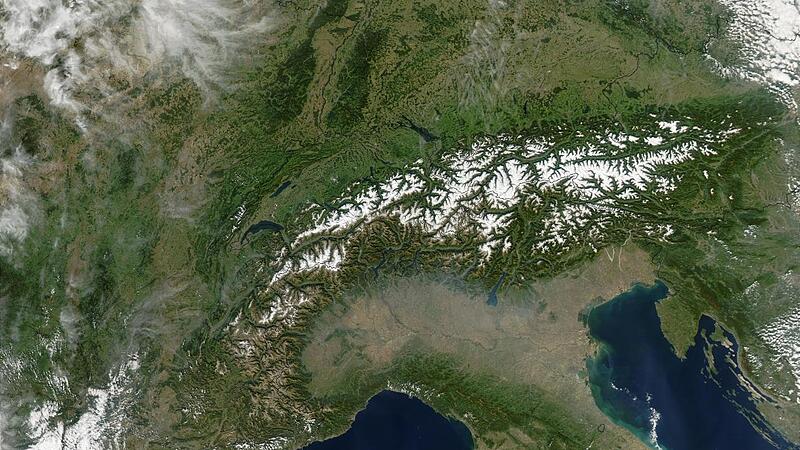Melting glaciers have become a symbol of climate change in the Alps. But the change is widespread. Seen from space, the disappearance of snow surfaces is already visible. However, this is by far not the biggest change as a result of rising temperatures. This is the conclusion reached by a research team led by Sabine Rumpf from the University of Basel and Grégoire Mariéthoz and Antoine Guisan from the University of Lausanne. Together with colleagues from Holland and Finland, the researchers examined the changes in snow cover and vegetation using high-resolution satellite data from the years 1984 to 2021. During this period, plant growth increased to 77 percent of the area above the tree line. This phenomenon of “greening” due to global warming is already well documented for the Arctic. “The scale in the Alps is proving to be really enormous,” says Sabine Rumpf, first author of the study.
More plants…
The Alps are turning green as new areas are covered with plants. Previous studies had primarily focused on the impact of climate change on Alpine biodiversity and changes in the distribution of plant species. So far, however, there has not been such a comprehensive analysis of the increasing plant growth in the Alps. The main reasons for the increase in plant biomass production are changes in precipitation and longer growing seasons as a result of rising temperatures. “Alpine plants are adapted to harsh conditions, but they are not very competitive,” says Rumpf.
Due to the change in environmental conditions, the specialized species lose their advantage and are pushed out. “The unique biodiversity of the Alps is therefore under great pressure.”
Compared to the vegetation, the extent of the snow cover above the tree line has changed only slightly since 1984. For their analysis, the researchers excluded regions below 1700 meters in altitude as well as glaciers and forests. In relation to the other areas, they found that the snow cover had decreased significantly in almost ten percent of this area. The researchers emphasize that this does not sound like much, but it is still worrying. “Previous evaluations of satellite data had not identified such a trend,” explains ecologist Guisan. “The reason for this may be that the resolution of the satellite images was not sufficient or that the periods of time considered were too short.”
… less reflection
“For years, local measurements have shown a decrease in snow thickness at lower altitudes,” adds hydrologist Mariéthoz. “At least in places, this decline has already resulted in areas that have largely become snow-free.”
As global warming progresses, the number of snow-free areas in the Alps is likely to increase further. This creates a vicious circle: “A greener mountain world reflects less sunlight and thus leads to further global warming – and therefore to a further disappearance of reflective snow surfaces,” says Sabine Rumpf.
The warming is also causing the glaciers to melt further and the permafrost to thaw. More landslides and debris flows could be the result. In addition, the snow and ice of the Alps play an important role for the drinking water supply and not least for tourism, says environmental scientist Rumpf.
Source: Nachrichten




